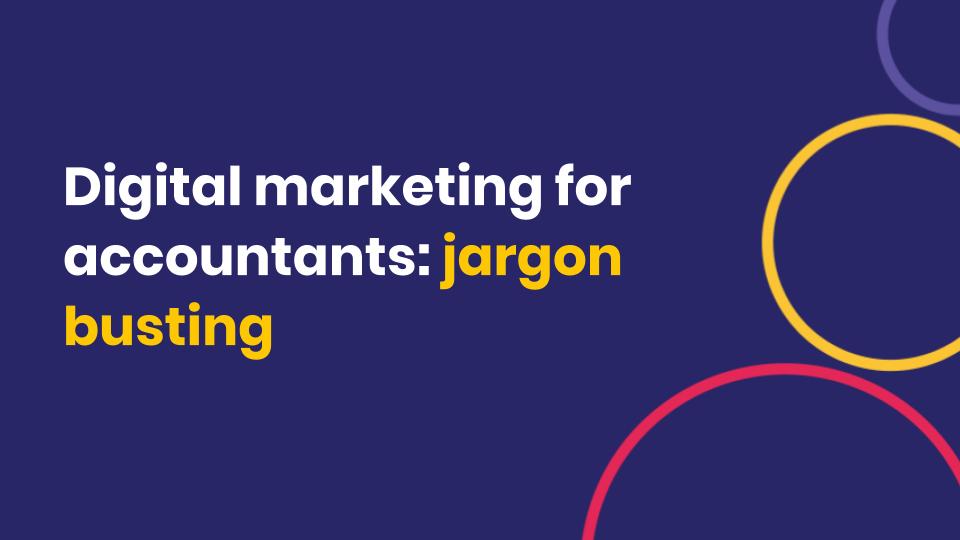The problem with jargon is that even people who say they hate it don’t always know they’re using it.
Because we work in digital marketing, and spend all day every day thinking and talking about it, it doesn’t occur to us that we’re using specialist terminology.
Of course PPC and SEO, the cornerstones of SEM, are the key influences on how your brand is represented in the SERP, right? And obviously your long-form content needs a good CTA if its going to achieve decent CTR.
Those examples aren’t remotely over the top – you could hear that kind of language at PracticeWeb HQ any day of the week.
In context, it’s highly efficient: when you’re in dialogue with peers, a shared language saves time and offers greater precision of expression.
Accountancy has plenty of specialist technical language of its own, from writing-down allowances to NICs, and the same ideas apply.
“Well, it’s a bit more complicated than that,” is a phrase we hear a lot from our specialist freelancers and fact-checkers. “Well, actually, that phrase has a very specific meaning,” is another.
It’s when talking to people outside your sphere of professional expertise that this becomes a problem.
Suddenly, professional terminology becomes ‘gobbledygook’ – an annoyance that hints at the etymology of the word ‘jargon’: a Middle English word meaning unintelligible chattering.
More practically, because the audience doesn’t understand the subtle distinctions between one word or phrase and another, it actually conveys the speaker’s meaning with less clarity than plain English.
There are a few aspects of good practice we can all adopt when using professional terminology.
First, always spell out acronyms or abbreviations the first time you use them.
Even though MTD and IHT might feel to you like commonly understood elements of everyday language, because you use them every day, an audience of non-accountants may well appreciate you writing out Making Tax Digital and inheritance tax in full, at least once.
Secondly, if you’re using one of those terms, consider not only spelling it out but also giving a brief explanation:
“Making Tax Digital (MTD) is the Government scheme first announced in 2015 with the aim of fully digitising the tax system by 2020.”
In a page of dense text, an explanatory box-out (see below) can also help provide visual variety and prevent reader fatigue.
Box-out | From print publishing, a box or other element separated from the main text offering clarification or additional information. A sort of informal footnote. Like this.
Finally, in addition, you could put together a glossary of key terms like we’ve just done for our own field of expertise, digital marketing.
We hope this will serve as useful collateral in conversations with clients and prospective clients who aren’t yet particularly familiar with the language of web design, brand strategy and content. (Remember, content should have purpose.)
But compiling it has had a useful side-effect, too: it’s made us realise just how much jargon we use, and how casually. We’ll be more mindful of this in future.
